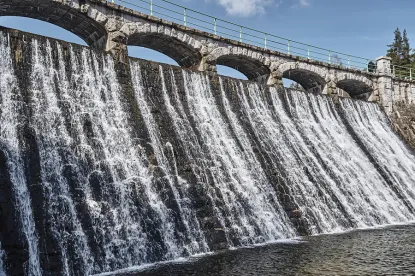In the past two weeks, U.S. District Courts in South Carolina and Washington issued decisions that dealt additional blows to the Trump Administration’s efforts to unravel the 2015 Obama-era “waters of the United States” rule (“Obama Rule”). In light of these rulings, the Obama Rule appears poised to remain effective in 22 states for at least the immediate future.
Importance of “WOTUS”
Both cases address rulemaking concerning the federal definition of the term “waters of the United States” (“WOTUS”). This term identifies the scope of federal jurisdiction under the Clean Water Act, which prohibits the unpermitted discharge of pollutants, including soil or fill material in water bodies, wetlands and even some normally-dry lands. Accordingly, as the definition of the WOTUS expands, so does the federal government’s control over construction and other activities affecting these areas.
Recent Decisions and Implications
Two recent decisions have dimmed the prospects of the Trump Administration’s “Suspension Rule,” which delayed the effective date of the Obama Rule until 2020, and reinstated the definition of WOTUS that existed before the Obama Rule. The Western District of Washington decision vacated the rule nationwide on November 26 in Puget Soundkeeper Alliance, et al., v. Wheeler, et al., and the District of South Carolina decision in South Carolina Coastal Conservation League, et al. v. Wheeler, et al., clarified on December 4 that it had both enjoined the Suspension Rule and vacated it nationwide. Even though these decisions rejecting the Suspension Rule applied nationwide, only 22 states are now subject to the Obama Rule — this is because many states and industry members have directly sued to challenge the Obama Rule. They obtained preliminary injunctions, preventing the rule’s enforcement in 28 states. In these jurisdictions, when the Suspension Rule was vacated nationwide, it did not revive the Obama Rule because the preliminary injunctions were already in place.
Nonetheless, the effect of the two recent decisions is that the federal government will now need to contend with adverse District Court decisions from different Circuits to prevent the Obama Rule from continuing to apply in 22 states.
Looking Forward: New Rule Forthcoming Imminently
This week, U.S. EPA and the Army Corps of Engineers (“Army Corps”) are expected to unveil a replacement rule that provides an alternate definition of WOTUS. Although the precise details of this rulemaking are unclear, last year President Trump specifically instructed the U.S. EPA and the Army Corps to consider adopting a specific definition based on a plurality opinion authored by Justice Scalia in Rapanos v. United States, 547 U.S. 715 (2006) — a definition that is narrower than both the Obama Rule and prior definitions. This definition covers non-navigable waters that exhibit a relatively permanent flow and wetlands only if they have a continuous surface water connection with a relatively permanent water body. However, U.S. EPA’s Unified Agenda notes that a Final Rule is not expected until September 2019. That rule will almost certainly generate further litigation, meaning the regulatory environment is expected to remain in flux as courts wade through increasingly-complex litigation on this topic.




 />i
/>i

